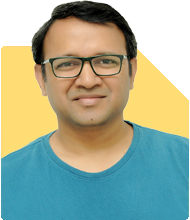Hi sir. I am 65 yrs old with wife, Sir just to get approx 1 lakh per month for my further life for surviving how much money i required to invest in mutual fund etc . Having own house no rent. Pls advise. Regards
Ans: It is thoughtful to plan for peaceful retirement life.
You have already built a strong foundation. You own a house and have no rent burden. That’s a major relief. Now, your goal is simple and clear—receive about Rs 1 lakh per month to cover expenses for yourself and your wife.
Let me now explain your options and investment plan in a detailed and practical way.
Understanding Your Income Need
Your monthly income requirement is Rs 1 lakh
That is Rs 12 lakhs yearly, for living and medical care
You also want to ensure the money lasts lifelong for you and your wife
This means your investment must give steady monthly income and beat inflation slowly
You will also need some growth, not just fixed income, to maintain purchasing power
Estimating the Ideal Corpus
You are 65 years old. Your financial plan must cover 25 years or more
This is because medical support and expenses increase from 70 years onward
With inflation considered, your Rs 1 lakh monthly need will rise in the future
So, the investment corpus should be large enough to:
Give you Rs 1 lakh per month now
Increase income over time, through partial growth-based funds
Stay safe and not run out before your lifetime
Based on current conditions and long-term returns of mutual funds, you may need Rs 2.1 crores to Rs 2.4 crores approx.
This amount will be divided into different types of funds for safety, income, and growth
If you already have some existing investments, that will reduce the gap
How to Structure the Investment
To ensure income and safety, you need a three-part approach.
Each part has a clear role. This is known as a bucket approach.
Bucket 1: Income Now – High Stability
This bucket gives monthly cash flow from safe and stable sources
Use debt mutual funds (regular plan), which suit retired investors
Only select high-quality, low-risk funds. Do not chase returns here
Choose regular plan and invest through a Certified Financial Planner for tracking and rebalancing
This bucket will cover 3 to 5 years of income, approx. Rs 40 to 60 lakhs
Withdraw monthly from here
Refill this bucket every few years using growth from other buckets
Bucket 2: Income Later – Conservative Growth
This gives returns better than FDs, with moderate risk
Invest in hybrid mutual funds, which balance equity and debt
Prefer regular funds with a Certified Financial Planner for guidance
SIPs are not needed here. Use lump sum with gradual SWP later
This portion may be Rs 60 to 80 lakhs, depending on your comfort
It helps maintain the next 6 to 10 years of income
Bucket 3: Long-Term – Growth and Inflation Protection
Invest in carefully selected diversified equity mutual funds
Choose active funds with experienced fund managers
Do not use direct funds. Use regular plan via a CFP for right entry, exit and strategy
This bucket keeps growing silently and will beat inflation
Withdraw only after 7 to 10 years, in parts, to refill Bucket 1
Allocate Rs 70 lakhs to Rs 90 lakhs here
This part ensures your funds don’t run out at 80 or 85 years
This three-bucket structure keeps your income stable. It also grows your money silently. You don’t have to sell equity in a bad year.
Why Mutual Funds and Not Fixed Deposits?
FDs give low returns. They do not beat inflation
FDs are fully taxable as per slab, unlike mutual funds
FDs do not allow gradual withdrawal (SWP)
In FDs, once you exhaust the amount, there's no backup
Debt mutual funds in regular plan allow you to withdraw monthly, and rebalance annually
Long-term capital gains tax on equity mutual funds is only 12.5% after Rs 1.25 lakh gain, which is efficient
Tax is only paid when gains are withdrawn
Debt mutual fund gains are taxed as per your slab, but only on redemption
All this makes mutual funds more flexible and tax-smart than FDs
Why Not Index Funds or Direct Funds?
Index funds are passive. They don’t adapt to market risk or sector weakness
In retirement, you need funds that protect capital, not just follow markets
Index funds cannot avoid bad sectors or weak companies
Active mutual funds managed by experienced fund managers give more stability in volatile years
Direct funds have lower expense ratio, but no advisor or help when markets fall
At your age, you need review, support, and guidance, not DIY investing
A Certified Financial Planner will help you adjust your SWP, rebalance funds, and guide redemptions
So, prefer regular plans via a CFP who understands retirement planning
Do not take risk with direct funds or online platforms without guidance
How Much to Withdraw?
Use Systematic Withdrawal Plan (SWP) instead of withdrawing full amounts
Withdraw Rs 1 lakh monthly from debt bucket for 3 to 4 years
After that, shift matured growth from hybrid and equity funds to refill Bucket 1
This way, you are not touching equity money during market lows
Your capital remains safe, and money flows monthly like a pension
Withdraw only what you need, not extra
What If You Live Longer?
This is the most important concern in retirement planning
Your corpus must last at least 25 to 30 years
That’s why we kept a large equity portion to grow with time
Medical inflation, caregiving, and lifestyle will change in 15 to 20 years
You must prepare now, not later
This structure ensures you never run out of money, and your capital can outlive you
What About Health Emergencies?
Keep a separate emergency fund of Rs 5 to 7 lakhs for medical support
Do not mix it with mutual fund buckets
Prefer senior citizen health plans, even if costly. Premium is worth it
If you already have a plan, great. But renew carefully each year
Medical inflation is nearly 10% per year now
Avoid depending on children or borrowing for health care
Tax-Efficient Withdrawals
Equity mutual fund gains beyond Rs 1.25 lakh are taxed at only 12.5%
If you withdraw in small parts, tax is reduced
Debt mutual funds are taxed as per slab, but only when you redeem
Use SWP to keep yearly gains below threshold
Regular plan through CFP ensures you plan withdrawals and avoid heavy tax in one year
Do not redeem all at once. That will trigger higher tax
Review and Rebalance Every Year
Sit with your Certified Financial Planner once a year
Review performance of each bucket
Shift from growth to income bucket as needed
Reduce exposure to equity slowly after 75 years, if required
You can also leave extra funds as inheritance for spouse or children
This review ensures discipline, control, and peace of mind
Final Insights
To get Rs 1 lakh monthly, you may need Rs 2.1 to Rs 2.4 crore corpus
Divide this wisely into three buckets for income, safety, and growth
Avoid FDs, index funds, and direct funds. They may hurt your long-term financial safety
Regular mutual funds via a Certified Financial Planner give support, safety, and flexibility
Use Systematic Withdrawal Plans to create a pension-like flow
Keep an emergency fund for medical expenses separately
Review portfolio yearly and adjust slowly. Don’t panic in market changes
Your wife’s future must be protected even after you. This structure ensures that too
You have lived wisely. Now, invest wisely to live peacefully
If you share the exact amount available for investing, I can show the exact plan in numbers. You may also explore a written financial plan with a Certified Financial Planner for even more clarity.
Best Regards,
K. Ramalingam, MBA, CFP,
Chief Financial Planner,
www.holisticinvestment.in
https://www.youtube.com/@HolisticInvestment




























